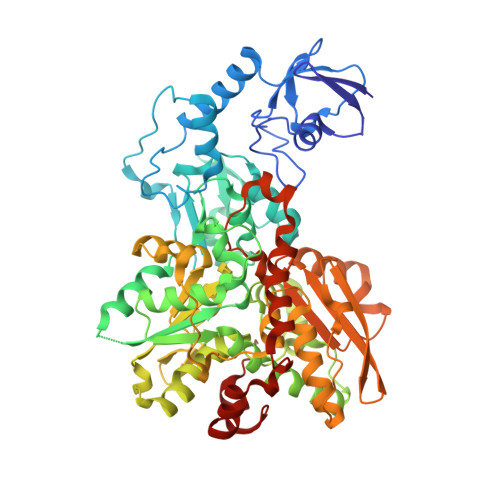Tuning Catalytic Bias of Hydrogen Gas Producing Hydrogenases.
Artz, J.H., Zadvornyy, O.A., Mulder, D.W., Keable, S.M., Cohen, A.E., Ratzloff, M.W., Williams, S.G., Ginovska, B., Kumar, N., Song, J., McPhillips, S.E., Davidson, C.M., Lyubimov, A.Y., Pence, N., Schut, G.J., Jones, A.K., Soltis, S.M., Adams, M.W.W., Raugei, S., King, P.W., Peters, J.W.(2020) J Am Chem Soc 142: 1227-1235
- PubMed: 31816235
- DOI: https://doi.org/10.1021/jacs.9b08756
- Primary Citation of Related Structures:
6N59, 6N6P, 6NAC - PubMed Abstract:
Hydrogenases display a wide range of catalytic rates and biases in reversible hydrogen gas oxidation catalysis. The interactions of the iron-sulfur-containing catalytic site with the local protein environment are thought to contribute to differences in catalytic reactivity, but this has not been demonstrated. The microbe Clostridium pasteurianum produces three [FeFe]-hydrogenases that differ in "catalytic bias" by exerting a disproportionate rate acceleration in one direction or the other that spans a remarkable 6 orders of magnitude. The combination of high-resolution structural work, biochemical analyses, and computational modeling indicates that protein secondary interactions directly influence the relative stabilization/destabilization of different oxidation states of the active site metal cluster. This selective stabilization or destabilization of oxidation states can preferentially promote hydrogen oxidation or proton reduction and represents a simple yet elegant model by which a protein catalytic site can confer catalytic bias.
Organizational Affiliation:
Institute of Biological Chemistry , Washington State University , Pullman , Washington 99164 , United States.


















